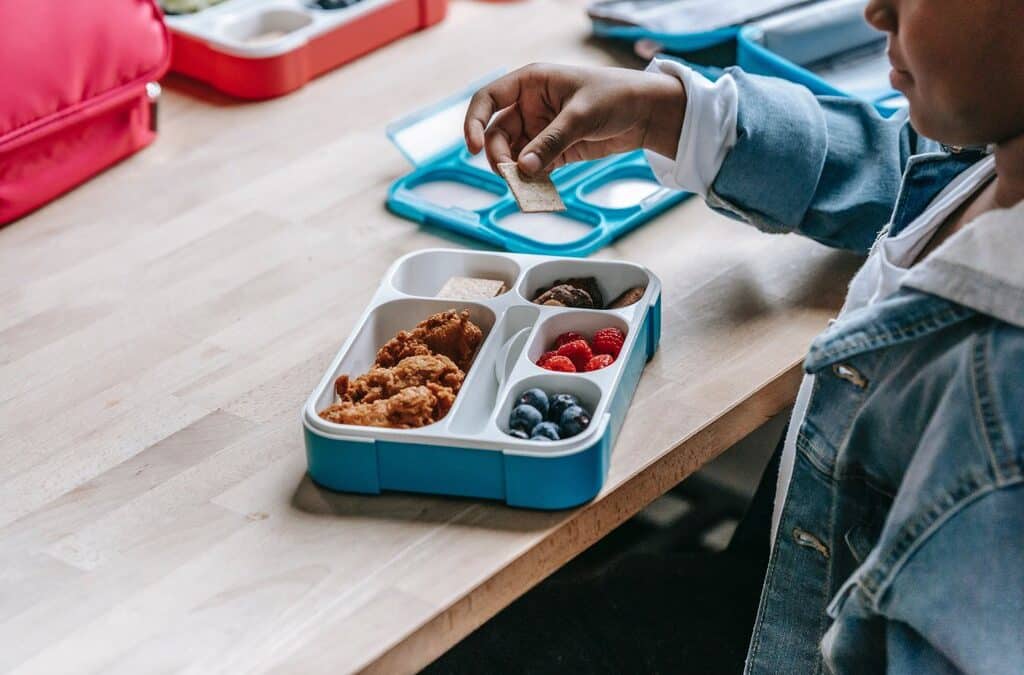Is there any time of the day that is more exciting than lunchtime at school? As students eagerly enter the lunchroom and greet their friends, these places can easily become one of the messiest places on earth. Luckily, our team at 360clean deals with messes like these every day! From trekked in debris to spills and litter left behind, here is your guide on how to clean school cafeterias.
Or, leave the cafeteria cleaning to our professional commercial cleaning team. With our specialized approach to commercial cleaning, you can expect consistent, high-quality results every time. Contact us today to receive a free quote for your school!
Standard Policies for Cleaning a School Cafeteria
Every cafeteria needs to have a protocol that employees can follow to ensure that they do the job right. This protocol should include the following elements:
- Detailed cleaning schedules for specific areas
- A list of approved cleaning products registered with the Environmental Protection Agency (EPA)
- A list of needed personal protective equipment
- Required hand hygiene
Make sure these policies are readily available for all employees to refer to when it comes time to clean the cafeteria.
Cleaning Schedules
A cleaning schedule (and checklist) provides employees with valuable details on cafeteria cleaning requirements, such as:
- Frequency
- Required products
- Process
- Staff responsible
When these items are lined out with specific details, it prevents staff from accidentally skipping an area, leading to potentially harmful pathogens lingering on the surface.
Is It Cleaning, Sanitizing, or Disinfecting?
After familiarizing yourself with the cleaning protocol, one of the first steps to ensuring your school’s cafeteria is clean is learning the difference between cleaning and sanitizing. When cleaning, you remove food particles, spills, and smudges from various surfaces.
When sanitizing, you’re using products that kill 99.99 percent of the disease-causing pathogens found on tables and food prep surfaces. Disinfecting, meanwhile, involves using chemicals that kill 100 percent of disease-causing microorganisms, leaving the surface safe to touch without leaving behind harmful contaminants.
The other major part of the job is knowing how to clean each area. For example, food service areas should always be sanitized, not disinfected. Save the more potent chemicals for places that don’t come in contact with food — you’d want to use disinfecting agents on cafeteria floors but an approved sanitizer on the tables.
Remember to Clean Before You Sanitize
Before you sanitize, you must clean the area to remove any visible food particles and other spills. This process ensures that the sanitizing products will work as effectively as possible.
Use the Products Correctly
After you know how to clean specific areas, you must pay attention to the products used for cleaning. You’ll want to follow your school’s standard routine cleaning and disinfecting protocol. However, some basic guidelines apply to most cafeterias.
Because cafeteria tables constantly come into contact with food, combining warm water and mild detergent will suffice for cleaning the surface. (Don’t forget to check for gum under the tables too!)
Always pay attention to the directions and warning labels on your cleaning products. Many contain harsh chemicals that require the use of gloves and eye protection. Anytime you use bleach, for instance, you should wear gloves to protect your hands.
Daily Cafeteria Cleaning
Students gather in the cafeteria daily to eat and socialize. You should therefore plan on cleaning and sanitizing tables and chairs after each meal. Other areas may need more routine cleaning.
Removing Garbage
It seems easier to wait until the end of the lunch period to empty garbage cans, but doing so can lead to overflowing receptacles. Instead, you should empty garbage cans and recycling bins as they become full. This will prevent food waste from spilling out and being stepped on and tracked throughout the school.
Cleaning High-Touch Point Areas
Anything touched by a student or staff member can carry disease-causing pathogens. High-touch points need more frequent cleaning to ensure that disease transmission is reduced. These surfaces include:
- Door handles
- Lunch table surfaces
- Trays
- Chairs
- Countertops
Visibly contaminated areas should be wiped immediately throughout lunchtime and disinfected between lunch periods.
Maintaining the Floors
Maintaining the floors is crucial for preventing the spread of disease and ensuring general safety. Cafeteria floors take a beating throughout lunch. Dirt, crumbs, spills, and more cover the surface, making students vulnerable to falling.
Always address any obvious messes on the spot, sweeping up debris between lunch periods. At the end of lunch, use a vacuum and wet mop to clean the entire floor.
Food Preparation Areas
Food preparation areas may be one of the most crucial spaces to address to maintain a clean cafeteria and safe food. These areas must be routinely cleaned before, during, and after lunch. However, accidental spills must be cleaned immediately to avoid further spreading.
Create a Training Program
With your detailed cleaning protocol close at hand, we hope you have a much easier time keeping your school cafeteria clean. Remember, creating a detailed training program on cleaning, sanitizing, and targeted disinfecting is essential in ensuring this area stays clean, no matter who is taking care of it!
Or, if you’re tired of dealing with the stress of cleaning your school cafeteria on your own, our team at 360clean is just a phone call away. With our specialized approach to commercial cleaning, you can expect consistent high-quality results every time. Contact us today to receive a free estimate for your school!

